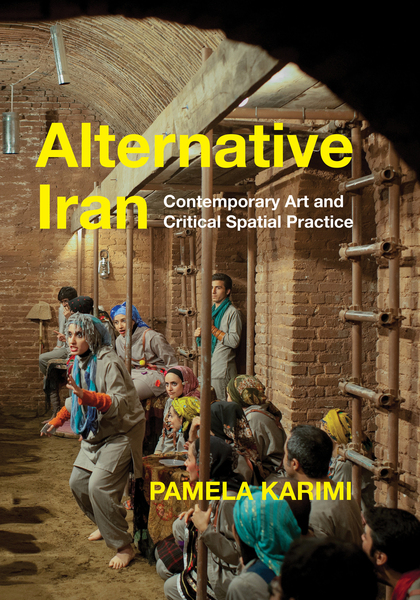
September 2022
452 pages.
from $35.00
Paperback now $17.50 (50% off)
Hardcover ISBN: 9781503630017
Paperback ISBN: 9781503631809
Ebook ISBN: 9781503631816
Alternative Iran offers a unique contribution to the field of contemporary art, investigating how Iranian artists engage with space and site amid the pressures of the art market and the state's regulatory regimes. Since the 1980s, political, economic, and intellectual forces have driven Iran's creative class toward increasingly original forms of artmaking not meant for official venues. Instead, these art forms appear in private homes with "trusted" audiences, derelict buildings, leftover urban zones, and remote natural sites. While many of these venues operate independently, others are fully sanctioned by the state.
Drawing on interviews with over a hundred artists, gallerists, theater experts, musicians, and designers, Pamela Karimi throws into sharp relief the extraordinary art and performance activities that have received little attention outside Iran. Attending to nonconforming curatorial projects, independent guerrilla installations, escapist practices, and tacitly subversive performances, Karimi discloses the push-and-pull between the art community and the authorities, and discusses myriad instances of tentative coalition as opposed to outright partnership or uncompromising resistance. Illustrated with more than 120 full-color images, this book provides entry into unique artistic experiences without catering to voyeuristic curiosity around Iran's often-perceived "underground" culture.
About the author
Pamela Karimi is Associate Professor of Art History at the University of Massachusetts Dartmouth. She is the author of Domesticity and Consumer Culture in Iran (2013).
"When politics becomes soul-craft, as it has in Islamic Iran over the last four decades, every aspect of life, each form of aesthetics, and every discursive practice becomes a potential locus of resistance, even rebellion. Alternative Iran is an informed and illuminating kaleidoscope of this dynamic culture pulsating beneath the dour Procrustean proclivities of the regime."
—Abbas Milani, Stanford University
"Only Pamela Karimi could have written this book, a sophisticated scholar able to stay both outside and inside Iran and the Western-dominated art world. She offers a richly illustrated book that archives temporary artworks in private homes, deserted basements, construction-sites, excessive landscapes, unimagined urban spaces, and reveals them as practices of hope for a more democratic Iran, a cosmopolitan art market, and a peaceful world."
—Esra Akcan, Cornell University
"Pamela Karimi's timely and important book highlights the charged agencies of contemporary Iranian artists in shaping their realities. Alternative Iran offers unexpected, impactful, and sophisticated insights into the contemporary art scene in Iran that necessarily subvert the dominant narrative imposed by and from both inside officials and outside hegemonic perceptions."
—Nada Shabout, University of North Texas
"Pamela Karimi brings together different spheres of artistic endeavor to show that, censorship and official puritanism notwithstanding, Iranian artists continue to be creative and find ways to express this creativity. Alternative Iran affords us a fascinating analysis of the continuing cultural effervescence observable in Iranian society."
—Houchang Chehabi, University of St. Andrews
"One can always read artistic production against the background of a particular place, time, or culture. But rarely do those elements take on such an important role as they do in this analysis of alternative art in contemporary Iran. Space, venue (sometimes literally hidden underground), and context all figure crucially in the analysis of recent forms of artistic expression that evade, co-opt, or obliquely challenge both the structure of state censorship and the Iranian regime. Karimi treats a broad range of artistic expression in supporting her contention that religious, cultural, and political constraints help shape the uniqueness of contemporary Iranian art.... Highly recommended."
—J. L. Miller, CHOICE